Solo Summer Hike and Camp in Okutama
Arriving mid-morning at Okutama Station during the Obon holidays was, as expected, bustling with activity. Perhaps a little surprising given COVID-19. I made a beeline for one of the two diminutive buses headed for Nippara Shonyudo. In October last year, Typhoon 19 (Hagibis) triggered a landslide collapse on the Nippara Kaido, hence the replacement buses. I should also add that there were traffic jams galore. The bus reached the Kurasawa bus stop only 10 minutes late, which wasn’t too bad.
This would be my third visit to the out-of-the-way Kurasawa Valley 倉沢谷. The hiking trail doesn’t get a name on the Okutama Yama to Kogen map and is denoted on most maps as simply the Rindou-Kurasawa-Sen or Kurasawa Forestry Track 林道倉沢線. On my first visit a few years back I dropped by the neighbouring 1,000-year-old Kurasawa-no-Hinoki the largest cypress tree in Tokyo and on a subsequent trip, snuck up to the mesh fencing near the now closed Kurasawa Limestone Cave as research for an article I wrote on Tokyo’s forgotten tourist caves. Only the foundation footings where the old reception cabin stood remain. On that occasion, I also came across the rather impressive five-tiered Godan Waterfall 五段滝.
I’ve learned from the Japanese interwebs that the cave in its latter years was run by a gentleman by the name of Sakawa san, who hailed from now uninhabited Kurasawa Village, which once housed workers from the Nippara limestone mine. Apparently, he was still serving tea from the reception cabin in the late 1970s, though from the 1980s onwards it became unmanned and subsequently dismantled. In July 1998, the decaying wooden path that skirts around the cave entrance was finally cordoned off to stop would-be interlopers and ward off potential culpability resulting from accidents. The cave was once used as a training ground for Shugendo and now falls under the jurisdiction of the Ishiyama Shine in Nippara.
Construction of the Kurasawa Forestry Track began in 1963, during Japan’s high-growth postwar period. It’s 3 km in length with an elevation gain of around 200 metres. There are five named bridges that, despite years of neglect, have stood the test of time. Unfortunately, the same can’t be said for the decrepit state of the road. In all honesty, it looks like a logging truck hasn’t travelled on it for 30-plus years. Off-road motorcyclists used to make it up to the Uodomeno Bridge 魚留橋 but unsurprisingly, Hagibis also did a number on this road, making it very nearly unpassable a little way up from the cave.
The stunning scenery along the Kurasawa Valley is what keeps me returning. Apart from the Godan Waterfall, there is the equally alluring Uodomeno Waterfall 魚留滝 which can be viewed from its namesake bridge. There are, of course, many other unnamed ones as you head up and beyond the Jizo Bridge 地蔵橋 the furthest up the valley.
On a previous recce, I found what appeared to be a great spot to set up camp for the night, which is precisely what I did this time. Just below a faint mountain trail that climbs up to the Nagasawa ridgeline 長沢背稜 there are a couple of good spots to pitch a small tent besides the river. Finally, for those feeling adventurous, you can follow this tributary up the Nagao Valley 長尾谷 though some of the trail has washed away and requires some good old-fashioned bushwhacking.
.
.
.
.

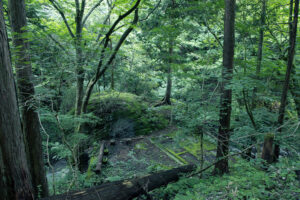
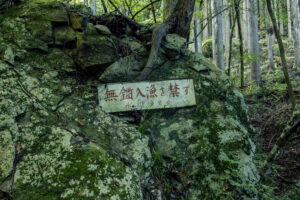
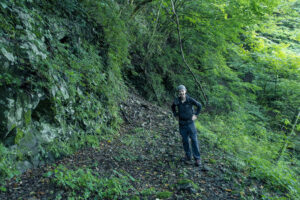
.
.
.
.
.
.
.
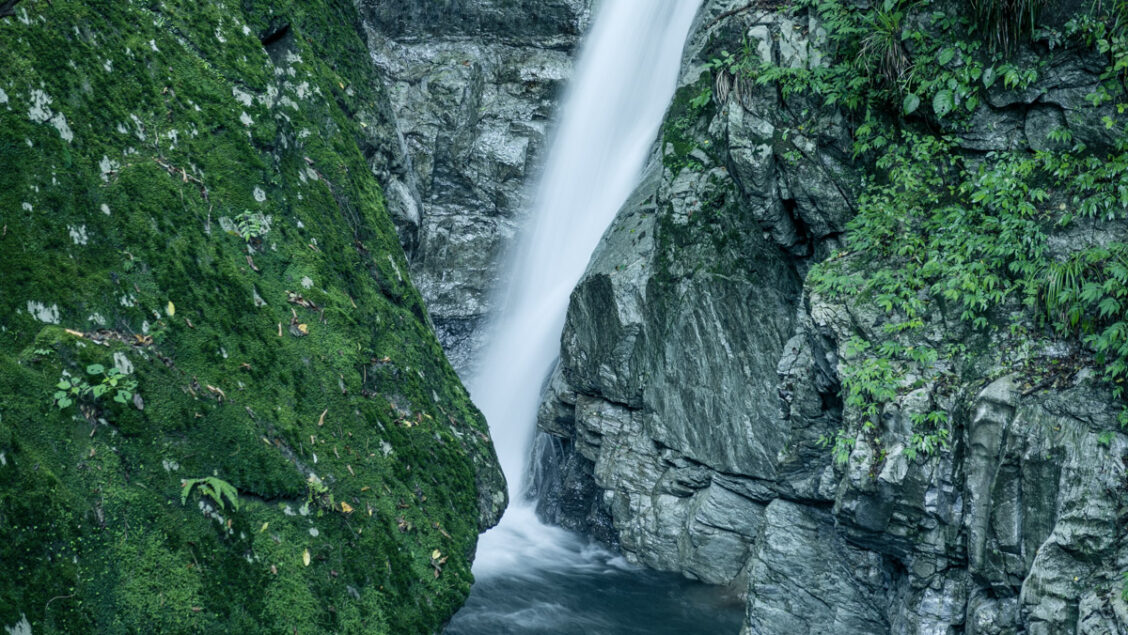

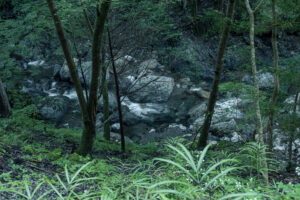
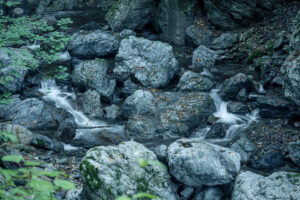
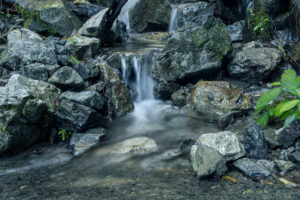
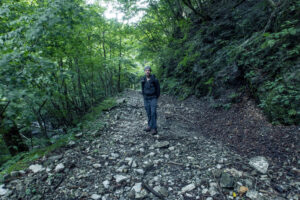
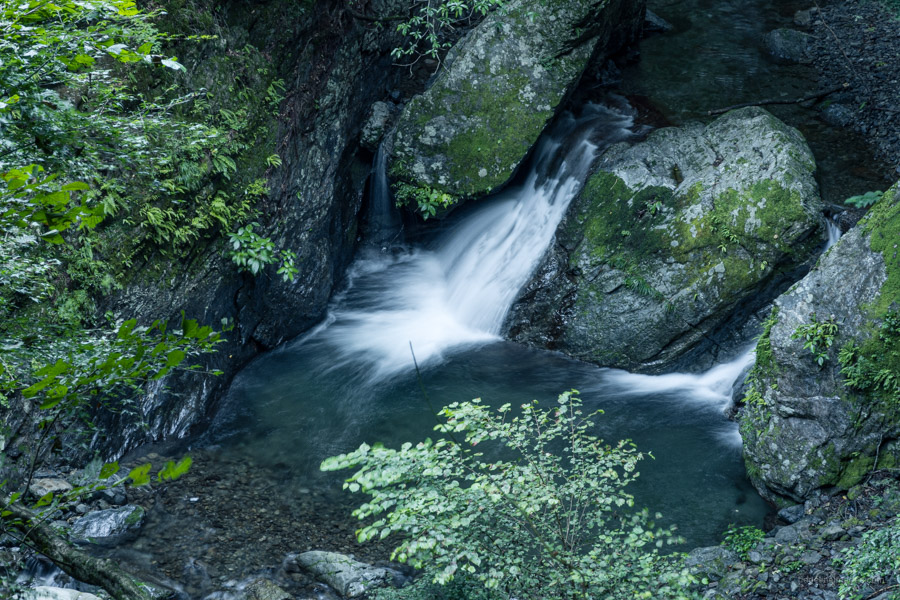
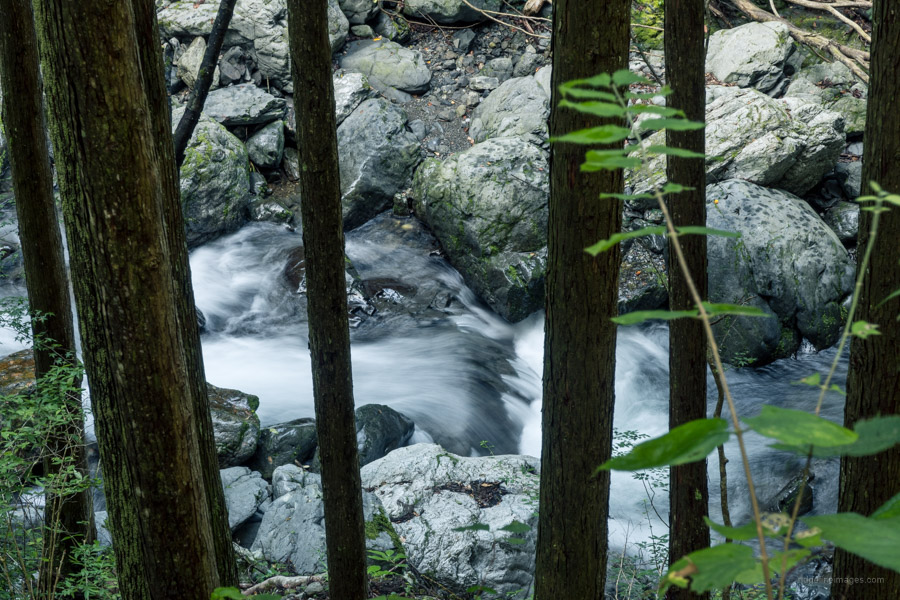
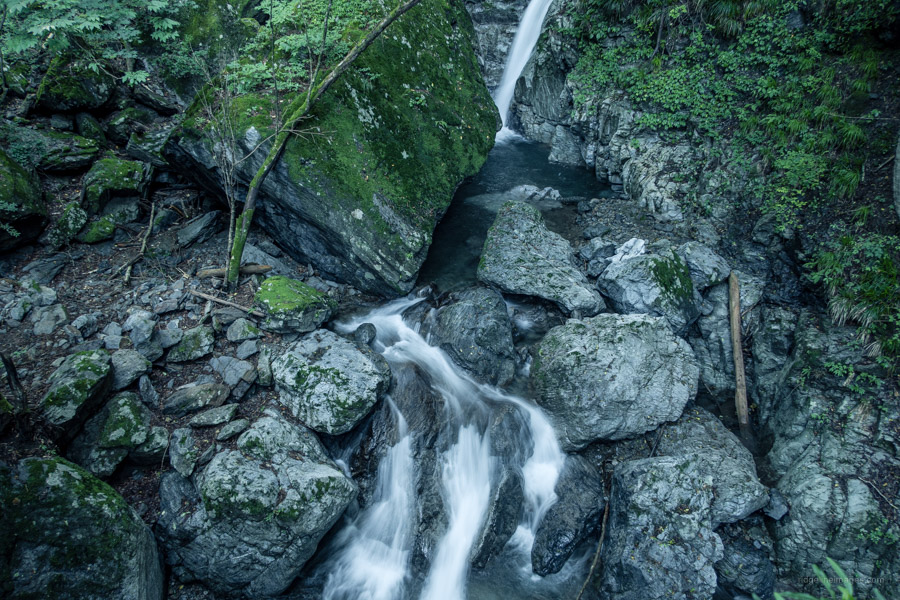
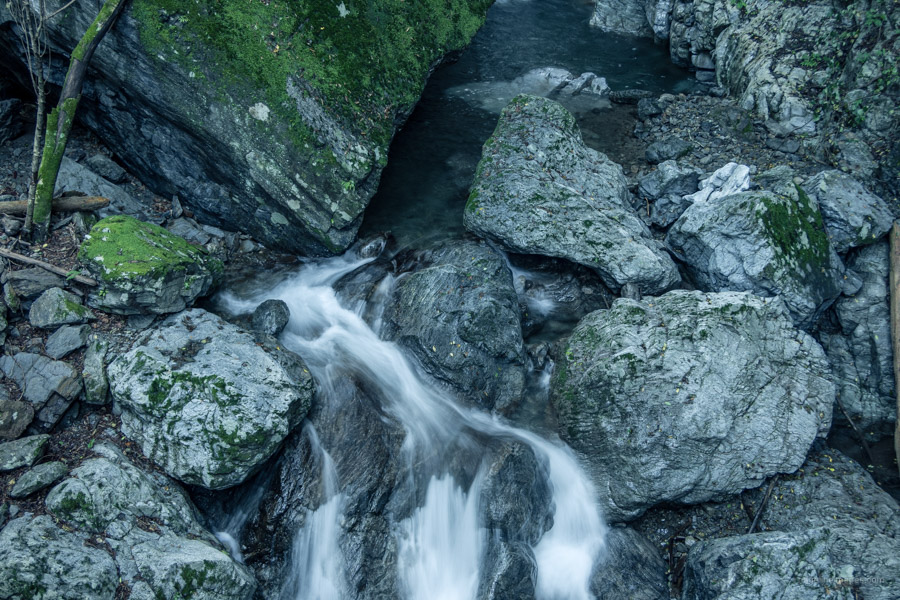
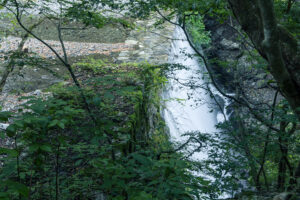
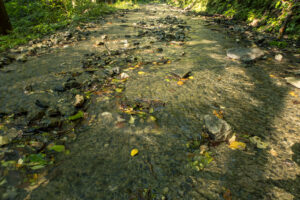
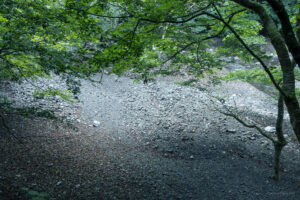

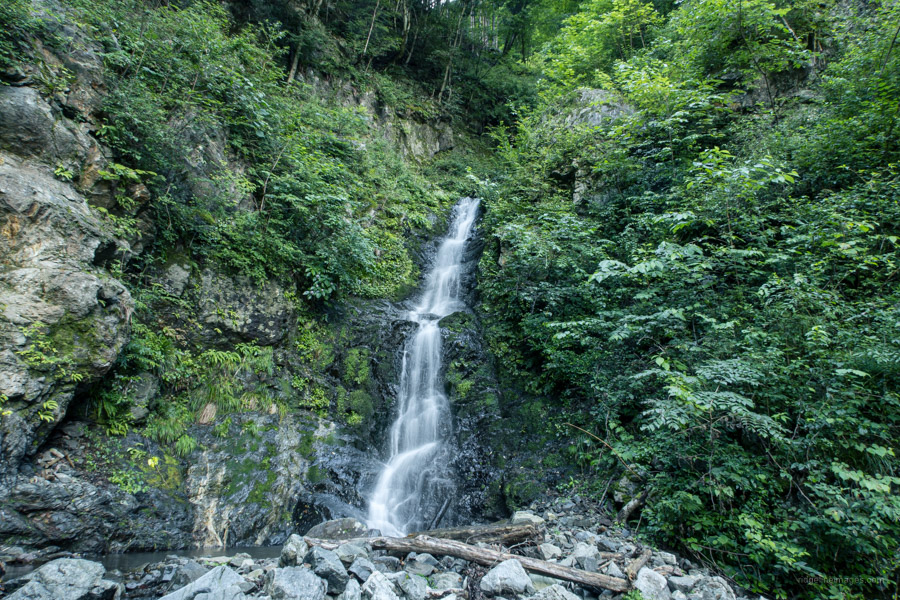
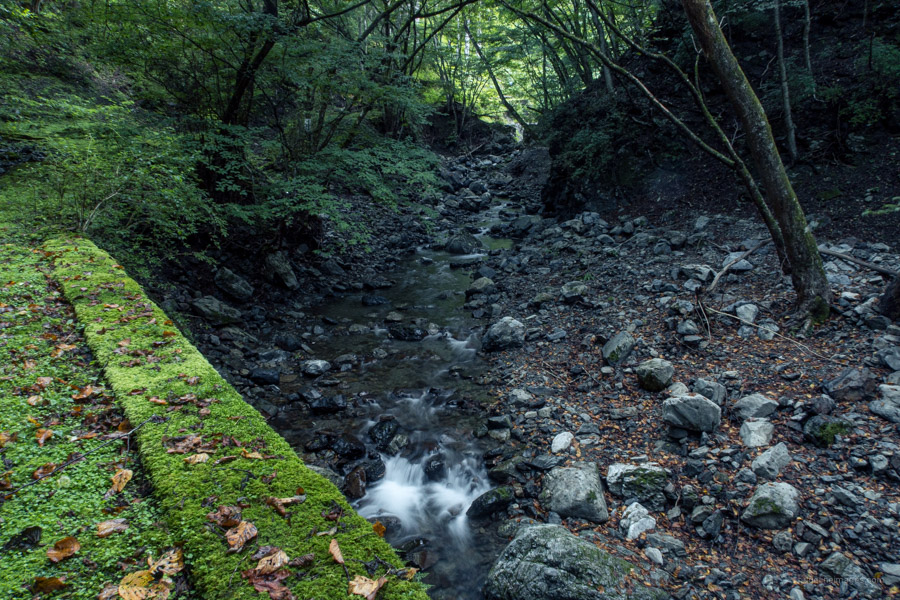
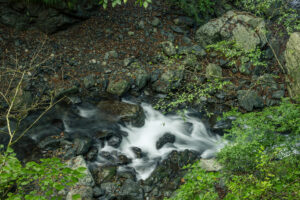
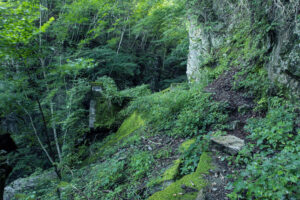
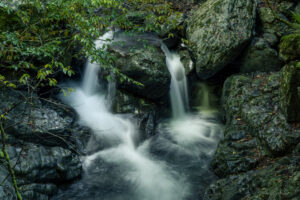
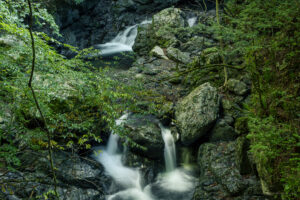






David, this looks and sounds really nice. I’m looking at Google maps and it appears the trail is really just the former road heading up into the valley (maybe a couple hundred meters before the Okutama Industrial Co). Are there any trail markers or just follow the road up? Any swimming pools along the river? I was thinking of the Hatonosu ravine this weekend to jump in the always cold Tama. Maybe this trail instead this weekend. By chance do you have the course mapped that you could share?
Hey Tim, thanks for reading. Yes, its basically an abandoned logging road. If you’re heading there by bus get off at Kurasawa 倉沢 around 20 minutes from Okutama Station. If on the other hand you’re planning to drive, there is unfortunately no place to park because the forestry track is cordoned off as it was damaged in the typhoon last year. In which case your only option would be to park at the Nippara limestone cave and walk down which may not be practical. As for the forestry track it’s easy to follow and only becomes indistinct close to the end. Last weekend there was a group swimming in the river around 200 metres along the road – it’s steep getting down there but certainly doable. Otherwise there is a spot above the dam, another upstream of the cave or where the road finishes where you can take a dip.
I found the road ( on Google maps) and a trailhead about 100 meters further along the 204 road. It looks like I can find a parking space near the bridge before the road or near the quarry. I guess we could hike up the trailhead and return along the former road?
I’ve been up to the bridge/road a few times. Unfortunate that the road is blocked since there’s a small parking area just 50 meters up… oh well.
Tim, that trailhead is basically used by folk heading up and back from the Kurasawa Hinoki. While it does continue to the remains of the old Kurasawa Village and eventually the Yokosuzu Ridge ヨコスズ尾根 it is seldom used. If you went that route and wanted to get back to the Kurasawa Forestry Track you’d literally need to hike via the Ippaimizu Refuge Hut along the Nagasawa ridgeline and down the Sueishi Ridge 棒坑尾根. An alternative shortcut is heading down to the Uodomeno Bridge 魚留橋 from the same trail branch on the Yokosuzu Ridge https://www.okutama-one.com/makuiwa/makuiwa_01.html I wouldn’t make an attempt on either of these routes without thorough planning. As for parking around the bridge or near the quarry it might be OK on weekdays during quiet times but would advise against it at the moment. The bus company has employed people to help manage the traffic flow along the Nippara Road and they may very well report your vehicle to the police if it is left for an extended period.
Thanks for the posts, Dave. I’m down in Christchurch New Zealand. COVID has already prompted two planned trips to Japan to commit harakiri this year. When will I get back? The question of the ages. At least I can live my Japanese hiking life vicariously through you. Keep up the great photos and travel writing.
Stefan, glad you’re enjoying the blog, and thanks for your comment. It’s the million-dollar question, but hopefully you’ll be back over here before too long.
Lovely river photos, David. Kurasawa itself is actually a really fun sawanobori as well, something of an Okutama entry-level classic. I did it some years ago, and after walking back afterwards along the rindou that you describe, my friend and I decided to head up the path and take a look at the deserted mining village you mentioned. It was really bizarre! We didn’t really know about the history that you’ve described here, so we couldn’t get our heads around what we’d found!
Keep up the great work with your website. All the best. Tony
Much thanks for the kind words Tony. I’ve read the valley is a popular spot for sawanobori although the river now has a fair bit of debris courtesy of typhoon 19. Good to see you made a return trip to Mt. Kentoku. Planning to head back there myself to check out Kuroganeyama this autumn.
Hi there, wondering if you have any tips for Tokyo accessible swimming holes/rivers as here. I know Mitake River gorge and the river area at Kinchakuda but if you could point me to other family friendly places for dipping in and refreshing, I’d be most grateful!
For family friendly spots with good access try the following: 10 mins from Higashi Hanno Station https://goo.gl/maps/vR4L53UWkDnMjzqX8 5 mins from Okutama Station https://goo.gl/maps/ue3ZQQJFxbmS3MtQ7 Nogawa Park in Koganei City https://goo.gl/maps/KoMpLMBtDzhwxVtC8 for extra cold water, go to the ほたる川 Hotaru-gawa area or わき水広場 Spring field, where fresh spring water is directly flowing out. Finally, use the words 水遊び (mizu asobi / water play) or 川遊び (kawa asobi / river play) to find popular swimming holes in your area!
Thanks!
I enjoyed reading your story. Kurasawa Valley is my favorite place in Okutama. I go there often and occasionally camp in the more remote spots. Very, very rarely do I see other people there. The landslides and forestry road collapse from the October ‘19 typhoon now keeps cars from going up the road, making the valley even more secluded.
I’m glad the buses to Kurasawa and the rest of Nippara are running again. It’s so beautiful up there; I’ve explored much of the rivers and streams. I take photos of the waterfalls, and if you are interested in seeing them, my Instagram account is the_secret_path.
Love the photos Michael. You really capture the essence of the Kurasawa Valley. That being beautiful, quiet, and serene… Always thrilled to hear from other Okutama enthusiasts!
Hey Dave, just a quick thanks for recommending Kurasawa and the nearby giant hinoki tree. Somehow, after 35 years of hiking in Okutama, I had missed these two wonderful trails! I was able to get down to several of the waterfalls for a cool dip and some photos. While not a long course, it is definitely a great place for a short run or hike.
Actually I used to frequently visit Nippara and the mountins around it, but realized recently that I had not been there for more than a decade. Thanks for refocusing me on this excellent base.
Hi Rob, I’m glad to hear you finally had the chance to check them out. You’re right; there are a couple of top spots that aren’t often frequented. My initial interest in the area was spawned after reading about the long-time closed Kurasawa Shonyudo, which was once the longest tourist cave in Tokyo.
I went (by car) to a few small caves that were run as businesses in that area in the late 80’s and early 90’s with my kids. I am sure that the Kurasawa Shonyudo was already gone by then, so probably wasn’t that one. There were a few that you could crawl on your belly around, with a flashlight and hard hat, with a couple of small rooms for standing. Nothing like as grand as the main Nippara cave that seems as if it is still popular.
I may have some photos from these caves in an old album somewhere
It sounds like one of them could have been the Yozawa Cave in Akiruno City. For that particular cave, visitors were given a flashlight and, in some cases, candles to explore it. It was apparently pretty muddy, and you had to descend the three levels using ladders and chains. It was closed in late 2000 owing to a decline in visitors and the risk of collapse.
Yes! It was certainly Yozawa Cave. The description sounds exact. Not surprised they are long gone, as it was a great little cave but a pretty low key business overall
I now do all of my camping in Kurasawa Valley. The caves in Kurasawa are accessible, but a bit dangerous to climb up and in to. I entered them recently, but didn’t have ropes, so didn’t go far in.
Yozawa Cave is a fun little crawl; I’ve been there a few times.